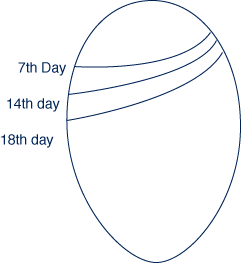Running dry incubation for the first 18 days is okay, but I think you still need increased humidity for the last 3 day (unless your chicks are too wet like mine). This is especially true if your chicks are dry.
not really.. depending on the size of the bator.. amount of chicks hatching and the room humidity you can actually get away with adding 0 water to the bator if conditions are right.. since as each chick hatches the humidity naturally rises in the bator from the moisture on the chicks down as well as the moisture in the egg shell...
for the last several hatches I have added 0 water during incubation and hatch and have still had 100% hatch rates.. however it's because the humidity here is high enough that no additional water is needed.. I'm sure come this summer I will be adding water just like I have in years past
the main thing (if a person wants to play the wait and see game) is keeping an eye on the hatching chicks and adjusting the humidity IF needed as they hatch
now having said all of that I think the average person in the average home will still need to add water at hatch.. but if conditions are right you can get away without having to do that






